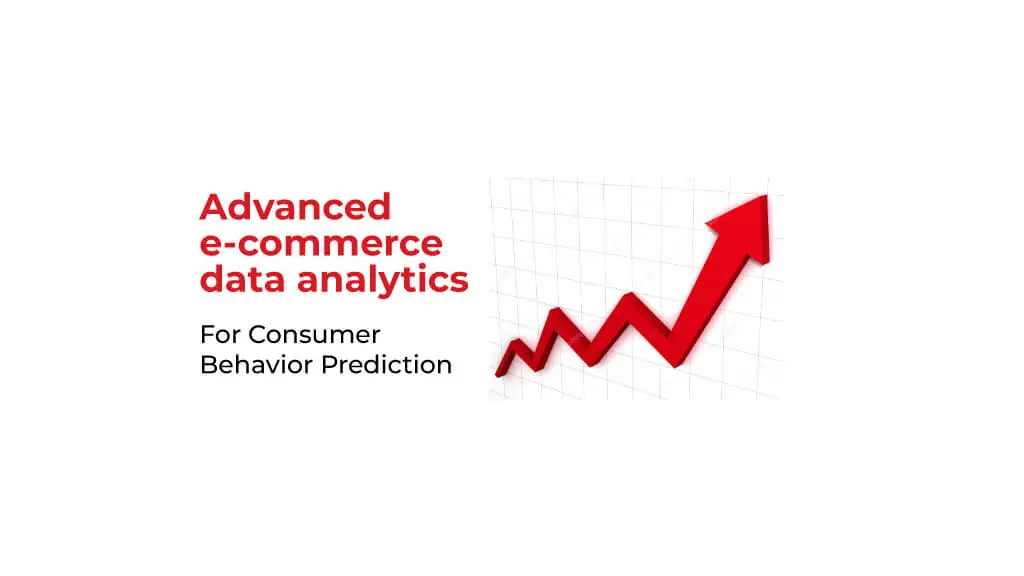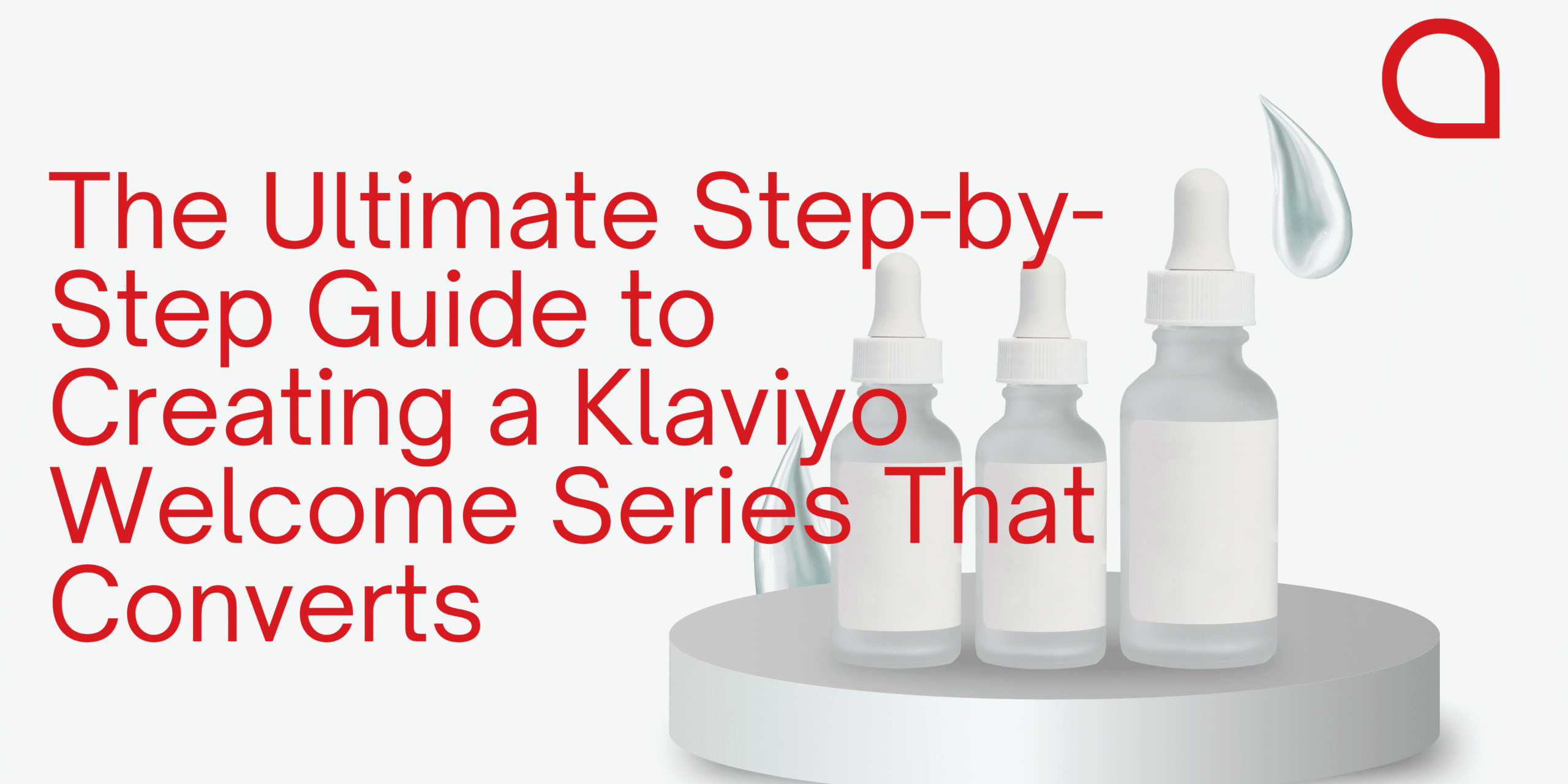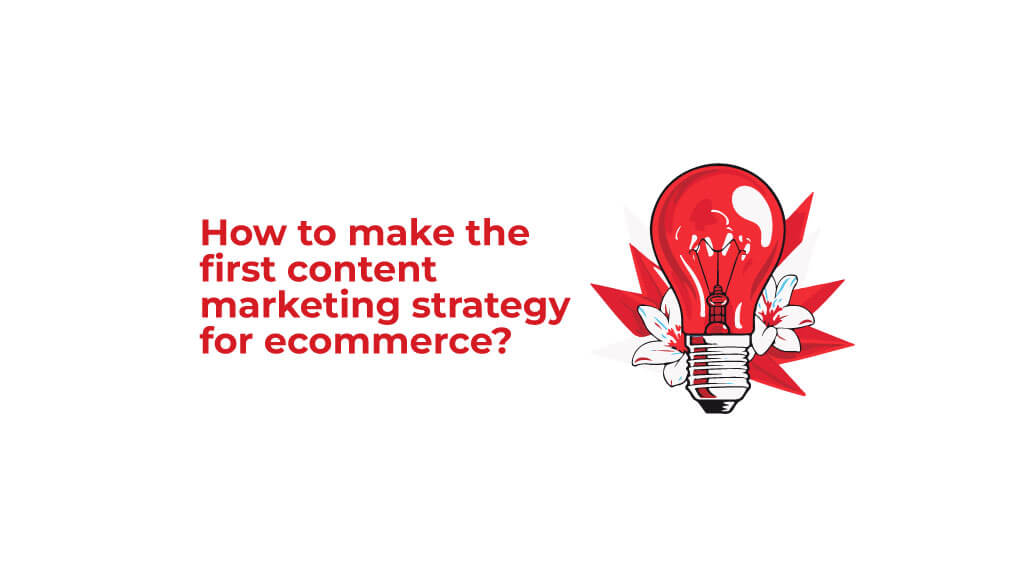One of the main problems e-commerce businesses face nowadays is predicting consumer behavior.
What do your customers like and dislike about your brand?
What do they demand from your brand, and how much do they expect from you?
Understanding e-commerce analytics is very important to solve the mystery of consumer behavior.
But here’s the exciting part:
With technological advancements, we have seen advanced analytics tools used to predict consumer behavior. They help you track each visitor’s move on your website and identify all the factors that are either aiding or frustrating your audience. This is the core of e-commerce analytics.
Consumer behavior prediction is significant as it can easily make or break a business. If companies know what their customers want, they can deliver the right solution at the right time, creating a better shopping experience and staying ahead of competitors.
In this blog, we will discuss how to use e-commerce analytics to understand consumer behavior and how to boost your business.
Understanding consumer behavior through e-commerce analytics
Consumer behavior is all about how people decide to buy things. E-commerce analytics focuses on what influences their decisions, including their needs, preferences, and habits.
For e-commerce businesses, this information is pure gold. It helps them develop better user experience and website copies and create personalized offers for customers – exactly what they want.
This means that if you know that your target market loves to shop during sales, you can implement sales as much as possible to increase your ROI.
A company with information regarding people’s preference for fast delivery can enhance the speed of shipping services. This is what we call consumer behavior prediction. Information like this allows a company to relate to its customers better, thus attracting more.
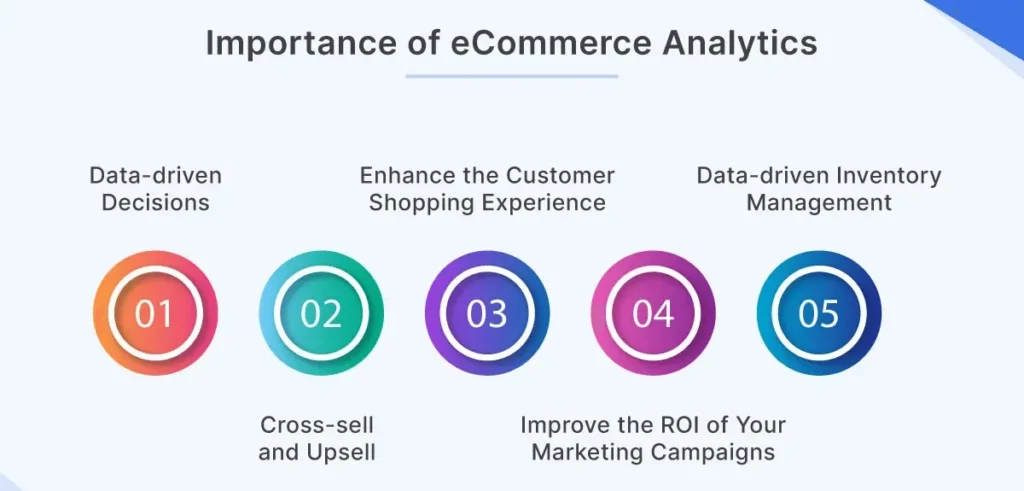
The role of advanced e-commerce analytics
Advanced analytics means using smart tools like artificial intelligence (AI), machine learning, and big data to learn about customers and predict their next actions.
These tools make consumer behavior prediction easy. It’s like having a superpower to understand your customers better and faster.
AI and machine learning: These technologies enable computers to learn from past data and predict with no explicit instruction on what to do. They work by determining customer journey analytics. For instance, if a customer keeps buying books on cooking, then AI might predict they will buy a new cookbook shortly.
Big data integration: Big data integration refers to a massive volume of data sourced from numerous sources, such as websites, social media, and even customer transactions. Businesses combine it all to understand what customers are doing correctly. Businesses use all information from e-commerce analytics to make the next move.
Predictive modeling is a model that predicts what will happen in the future. It works by using customer behavior analytics in the best way possible. It can predict when people will likely buy a new phone or what they want next.
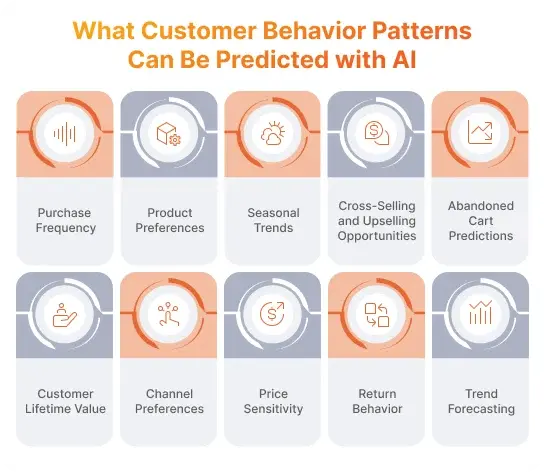
Benefits of predicting consumer behavior
Predictive analytics on consumer behavior has many advantages. Here is how it helps businesses:
1- Improved conversion rates through accurate targeting
Knowing what customers are looking for allows businesses to display the products at the appropriate time, and this pinpoint targeting tends to result in more sales. This is mainly done using e-commerce analytics.
Let’s say that a company knows that a customer wants a particular product; they will send it to the customer as an offer, raising the opportunity for the customer to take action and buy, thus increasing the conversion rates.
2- Better customer experience through personalized solutions
When a company uses data to understand its customers’ needs and preferences, it can create a better experience. For instance, a clothing store may give recommendations based on previous purchases.
A restaurant may suggest dishes to customers who are likely to love them. This is all done by customer journey analytics. Customers feel more comfortable when a business shows that it understands them, thus improving their chances of returning.
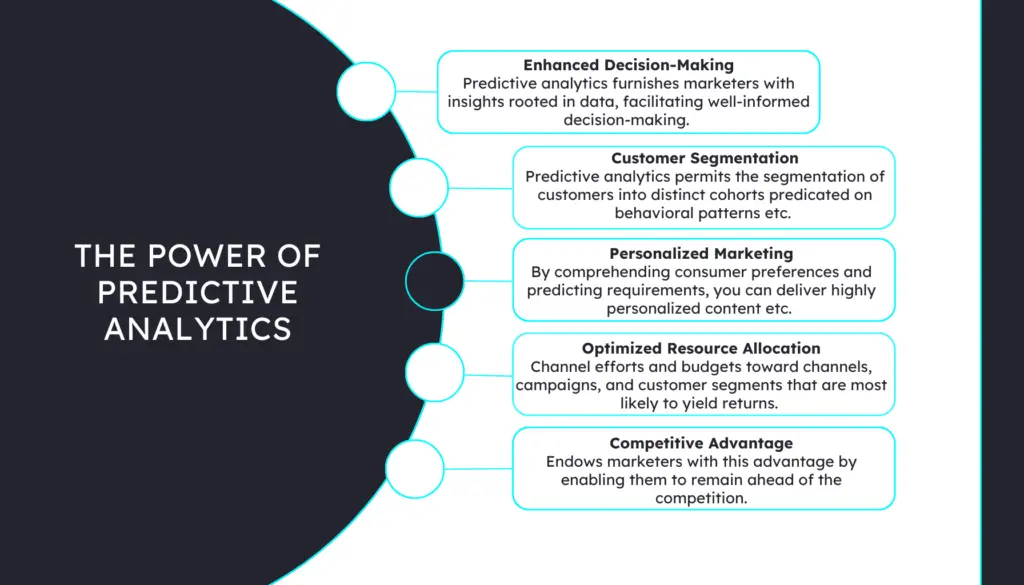
3- Lower costs by making better use of inventory and other resources
The other thing about predictive consumer behavior is that businesses can better manage their resources. For instance, they can predict which products will be popular, ordering the right quantities to avoid stockouts or overstocking.
4- Improved competitive advantage in the market
Businesses can stay ahead by better understanding consumer behavior than their competitors. Predictive analytics helps businesses make smarter decisions, adapt to changes quickly, and offer a better customer experience. This competitive edge is crucial for long-term success.
Tools and methods for consumer behavior forecasting
Here are some tools and methods that you can use to gather information through e-commerce analytics. These tools will be a lot helpful to your business.
1- Gathering data tools
To begin with, companies must first gather data to predict customer behavior. And these are some of the tools they use:
Web analytics (e.g., Google Analytics):
This application tracks what people do on a website. These web analytics tools mainly aim to predict customer journey analytics. It says how many people visit, where they look, and how much time they spend.
Social media listening tools:
These tools help businesses see what people say about their brand or products on social media, helping them understand customer opinions and trends.
CRM systems:
CRM stands for Customer Relationship Management. This tool helps businesses store and track customer information, like what they’ve bought and how often they shop.
2- Data analysis techniques
Once businesses collect data, they use these methods to understand it. Understanding this data helps predict consumer behavior.
Cohort analysis studies:
Cohort analysis studies cohorts of customers with the same behavior. For instance, companies can compare people who purchased a product last month with those who purchased the same product six months ago and determine how their habits changed.
Sentiment analysis:
This technique checks how people feel about a product or brand based on their words. For instance, it can tell if customers are happy or upset based on reviews or social media posts.
Predictive modeling using machine learning:
This method uses data to predict what a customer might do next. For instance, it can predict what product a customer might buy next based on their previous shopping behavior.
3- Visualization tools
Visualization tools transform data into graphical and chart formats that can be easily understood. This way, businesses make quick decisions:
Dashboards and reporting software:
This tool gives businesses a simple visual summary of the important data. For instance, they will know how many people visited their site or what products sell best.
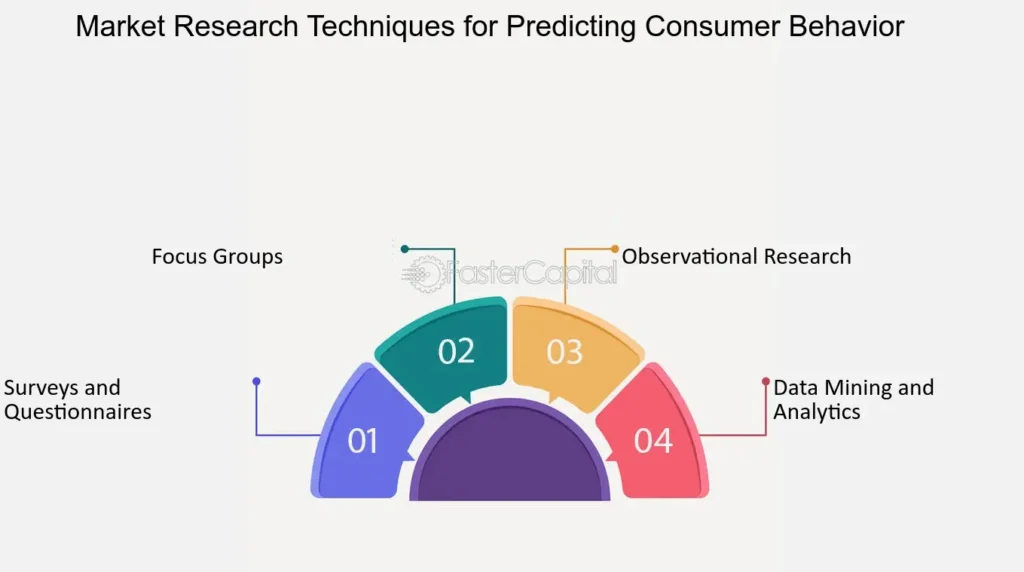
How predictive analytics works in e-commerce
Predictive consumer analytics plays a key role in e-commerce businesses. Imagine you already know what your customer wants to buy on your website. You will try your best to showcase your product to the customer so that they will purchase it. This is how predictive analytics work in e-commerce.
Steps in the predictive analytics process
Here are the steps in the predictive analytics process.
1- Data collection and cleaning:
First, businesses collect data from all sources (websites, social media, customer profiles). They then clean the data to ensure it is accurate and complete.
2- Pattern and trend identification:
The next thing that businesses do is to look at the data for patterns, such as people always buying a particular product in winter or people tend to shop more during the holiday season.
3- Building predictive models:
Businesses use these patterns to build models, which inform them about predicting what a customer will do next. A model may thus predict that a customer who recently purchased running shoes would likely purchase a fitness tracker shortly.
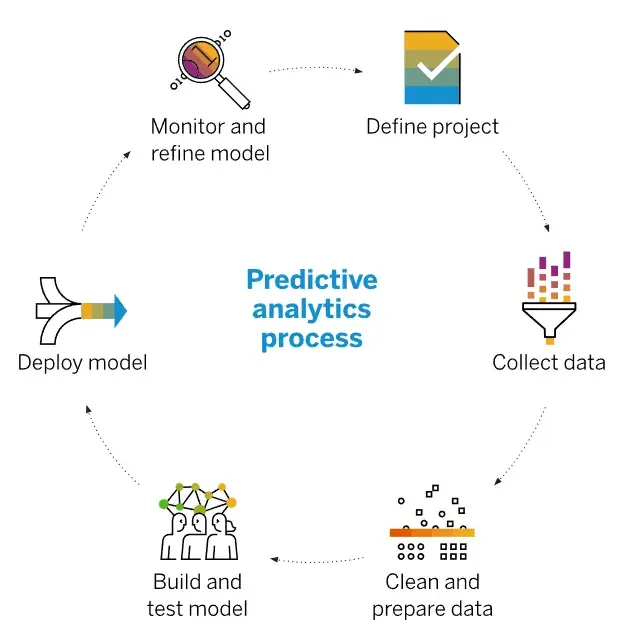
Examples of predictive analytics in practice
E-commerce analytics will let the business know when seasonal products such as winter jackets or Halloween costumes will be in demand, thus helping them stock up early.
Recommendation of products to individual customers based on previous purchase history: A business may recommend a product to its customer based on previous purchase history. For example, the website may recommend a case or charger as accessories if you bought a phone.
Dynamic pricing based on consumer behavior: Predictive models can adjust prices in real time based on demand. If a product is selling fast, the price might go up. If it’s not selling well, the price might drop to encourage more buyers.
Real-life case examples of companies using e-commerce analytics
Many major companies have applied advanced analytics to predict consumer behavior and improve their businesses successfully. Here are some examples:
Amazon recommendation system
Amazon is best known for its recommendation system, which works on customer journey analytics. Its recommendation system uses data from previous purchases, browsing behavior, and even what other customers bought to suggest products that may interest you.
So, if you have a phone, Amazon can tell you about phone cases, chargers, accessories, etc. This personalized experience will keep customers coming and also increase sales significantly.

Netflix and the power of personalization
Based on your viewing history, Netflix uses data to predict what shows or movies you’ll want to watch next. This personalization ensures that Netflix will be recommending the titles you will like best, even though you would not have known them otherwise. Thus, it has been the best source of entertainment for most users as it can understand what they want.

Shopify: leveraging AI for deeper sales understanding
Shopify is a well-known e-commerce website that has used AI and e-commerce analytics to improve the understanding of business regarding customer behavior.
It uses data to predict which products will sell best, when discounts should be offered, and how marketing campaigns can be created that will target the desired audience.
This helps Shopify users make data-driven decisions, thus increasing sales through the focus on what works.
Conclusion
Customer behavior analysis is now more important than ever. This is because people are becoming aware of more and more brands. Now, people want more than a product from a company; they want an exceptional experience that will make them revisit your website.
E-commerce analytics tries to understand consumer behavior through data and analytics.
Nowadays, many advanced web tools provide valuable data about consumer behavior, helping businesses make the right decisions.
Subscribe to our weekly newsletter to get crispy CRO tips and marketing strategies that win millions of qualified leads with minimal marketing spend.
FAQs
-
Which eCommerce platform is most used?
Shopify is one of the most popular platforms because it’s easy to use and supports businesses of all sizes. WooCommerce and Magento are also widely used, especially for businesses needing more customization.
-
What is the most widely used eCommerce analytics tool?
Google Analytics is the most popular tool for e-commerce because it is free, powerful, and helps track customer behavior, website performance, and sales trends.
-
What is an eCommerce data analyst?
An eCommerce data analyst studies customer behavior and sales data to find patterns. They help improve the shopping experience, boost sales, and make smarter business decisions.
-
What is the best tool for analytics?
The best tool largely depends on your needs. At the same time, Google Analytics is well suited for general tracking purposes, while Adobe Analytics and other more advanced tools like Tableau work better for advanced data visualizations and insights.
-
What is analytics and its types?
Analytics is the use of data to understand and solve problems. Types include:
Descriptive: What happened?
Diagnostic: Why did it happen?
Predictive: What might happen?
Prescriptive: What should we do next?
